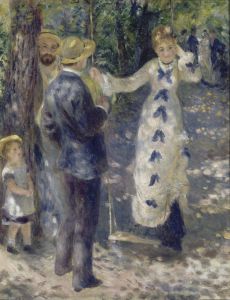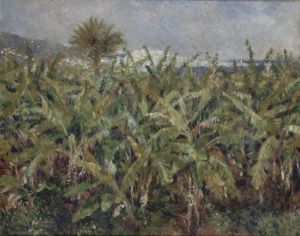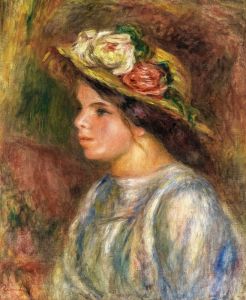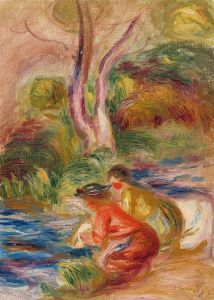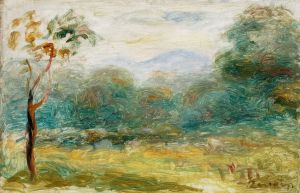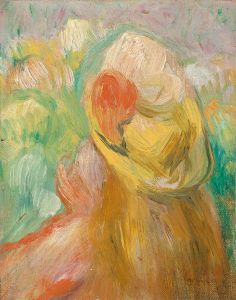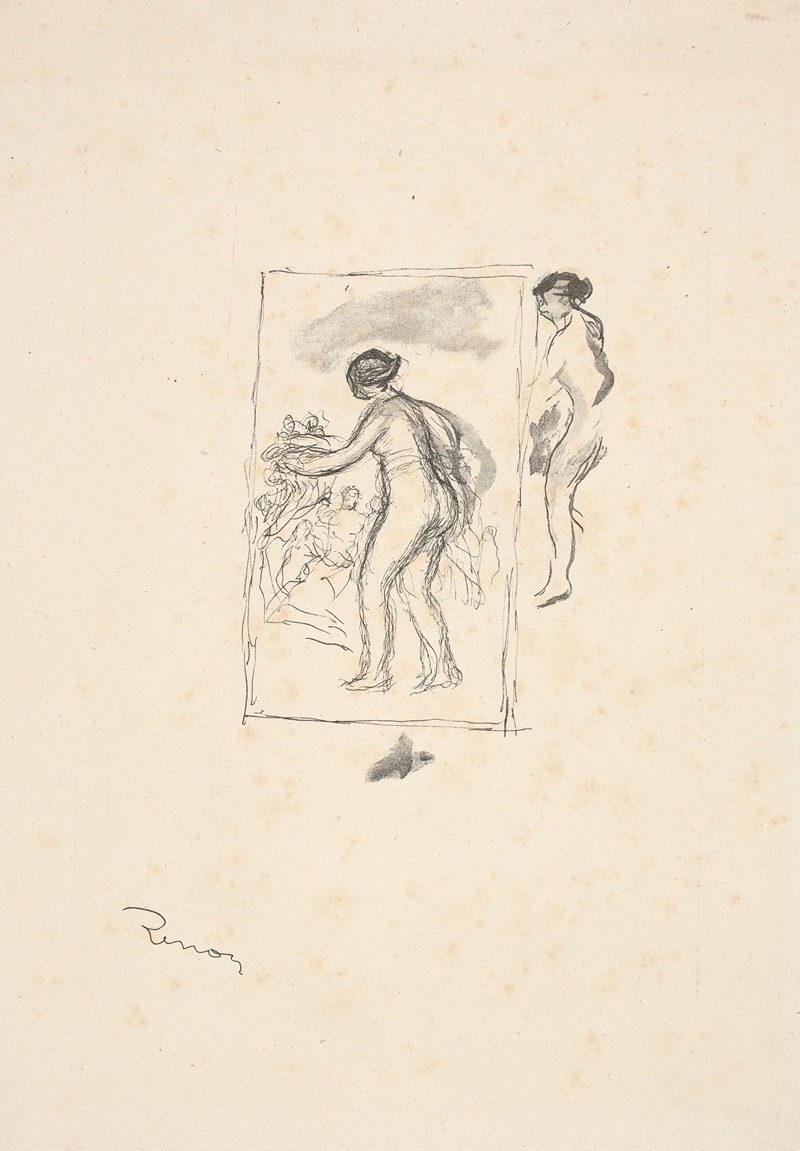
Femme au cep de vigne
A hand-painted replica of Pierre-Auguste Renoir’s masterpiece Femme au cep de vigne, meticulously crafted by professional artists to capture the true essence of the original. Each piece is created with museum-quality canvas and rare mineral pigments, carefully painted by experienced artists with delicate brushstrokes and rich, layered colors to perfectly recreate the texture of the original artwork. Unlike machine-printed reproductions, this hand-painted version brings the painting to life, infused with the artist’s emotions and skill in every stroke. Whether for personal collection or home decoration, it instantly elevates the artistic atmosphere of any space.
Pierre-Auguste Renoir, a leading figure in the Impressionist movement, is celebrated for his vibrant light and saturated color, often focusing on people in intimate and candid compositions. One of his works, "Femme au cep de vigne" (translated as "Woman with a Vine"), exemplifies his mastery in capturing the essence of his subjects with a delicate interplay of light and shadow.
"Femme au cep de vigne" is a painting that showcases Renoir's fascination with the human form and nature. Although specific details about the creation of this painting, such as the exact date and the identity of the model, are not widely documented, it is consistent with Renoir's style during the late 19th century when he was deeply engaged in exploring the nuances of light and color.
The painting features a woman intertwined with a vine, a motif that Renoir often used to symbolize a connection between humanity and nature. This theme is recurrent in his work, reflecting the Impressionist interest in capturing fleeting moments and the natural world. Renoir's brushwork in "Femme au cep de vigne" is loose yet deliberate, allowing the viewer to experience the texture and movement within the painting. The use of vibrant colors and soft transitions between light and shadow are characteristic of Renoir's technique, which aimed to evoke emotion and a sense of immediacy.
Renoir's approach to painting was influenced by his desire to break away from the rigid structures of academic art. He was part of a group of artists who sought to depict modern life in a way that was more spontaneous and true to the moment. This painting, like many of his works, reflects his commitment to capturing the beauty of everyday scenes and the people within them.
Throughout his career, Renoir's work evolved, and he experimented with different styles and techniques. However, his focus on the human figure and his ability to convey warmth and intimacy remained constant. "Femme au cep de vigne" is a testament to his skill in rendering the human form with sensitivity and grace.
Renoir's legacy as an artist is marked by his contributions to the Impressionist movement and his influence on subsequent generations of artists. His paintings continue to be celebrated for their beauty and emotional depth, and "Femme au cep de vigne" is no exception. It remains a part of the rich tapestry of Renoir's oeuvre, illustrating his enduring fascination with the interplay between people and their environments.
While specific exhibition history or provenance details of "Femme au cep de vigne" might not be extensively documented, the painting is representative of Renoir's broader body of work, which is housed in numerous prestigious collections worldwide. Renoir's art continues to be studied and admired for its innovative approach and its ability to capture the essence of life with warmth and vibrancy.








